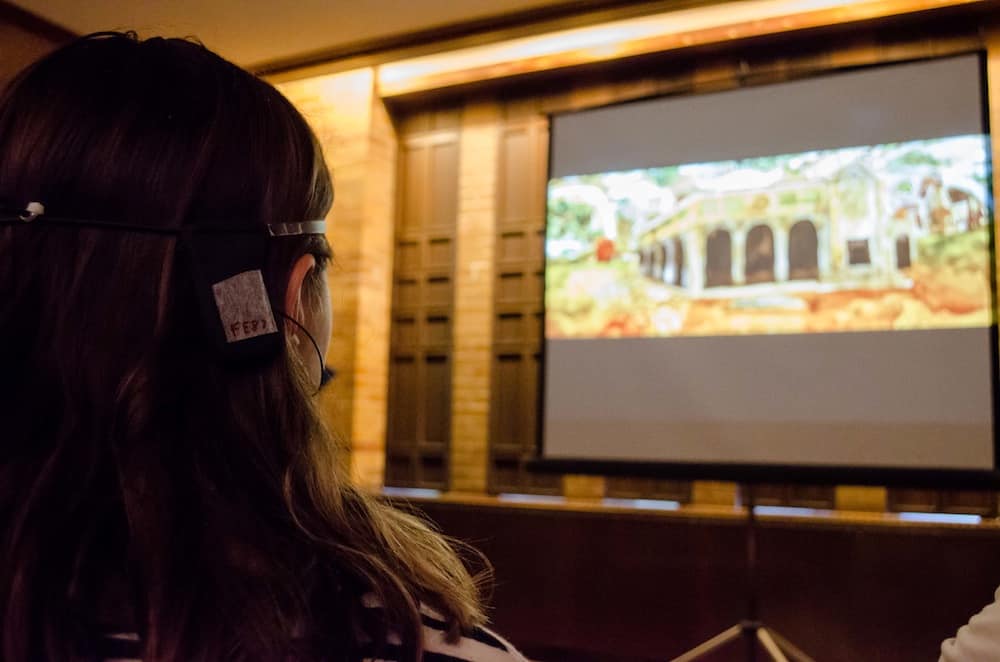I am seated in front of a screen that tells me to relax. That may be easier said than done considering a stranger just secured a headband around my head and attached two clips to my ears like earrings. For a moment, I feel like I am in a science fiction
movie — about to have my mind read, analyzed, and/or stolen by a mad scientist.
The other participants and I play a short game in the style of Mario Party for Nintendo 64, in which our minds are controllers. Afterwards, to the side of the screen, trained musicians and a talented singer begin to play their instruments; suddenly I no longer feel like I am in an evil lab or an arcade, but rather in a cultural haven.
Part experiment, part art installation, the My Virtual Dream exhibit combined both arts and science in a way I’ve never experienced before. The correct name for the contraption placed on my head is a Brain Computer Interface, BCI for short, and it was used on Saturday night to transmit participants’ brain signals so that they could alter what was happening on the domed screen above. The movement on the screen reflected thinking processes and physical movements that are controlled by the brain. Before beginning the faux-dream, one of the facilitators instructed me to blink, and watch how the line on the screen jumps. I was immediately fascinated at how my mind could be projected to a screen through a simple headset.

Dr. Randy McIntosh leads the My Virtual Dream team. MICHAEL CHAHLEY/THE VARSITY
The simplicity of the headsets is an achievement in hardware. The Virtual Brain team is lead by Dr. Randy McIntosh — a professor at U of T’s Institute of Medical Science and vice-president of research at Baycrest Health Sciences. The function of this experiment, he says, is to “find a more accurate way to read brain waves,” which can then be used for clinical purposes. “The hope for this technology is to be able to use it anywhere — in your home, your car, bathroom, restaurant, wherever,” says McIntosh. It is mind-boggling to think that in the near future, with the help of a comfortable headset, brainwaves will be transmittable on the subway.
While no mind reading happened at the My Virtual Dream exhibit, the activity of my brain and the software’s ability to read it were being analyzed. McIntosh said that while the hardware of The Virtual Brain is pretty advanced, the software still needs some work. He believes the involvement of those who participated in the “challenging environment” of Nuit Blanche will help perfect the technology.
Many Nuit Blanche visitors, myself included, understood the My Virtual Dream exhibit as merely an awe-inspiring artistic experience; however, to the neuroscientists involved in the international The Virtual Brain project, the experiment-installation is more than just art — it is a stepping stone to convenient and accurate brain analysis.
To learn more about the research behind The Virtual Brain and its objectives, click here.


